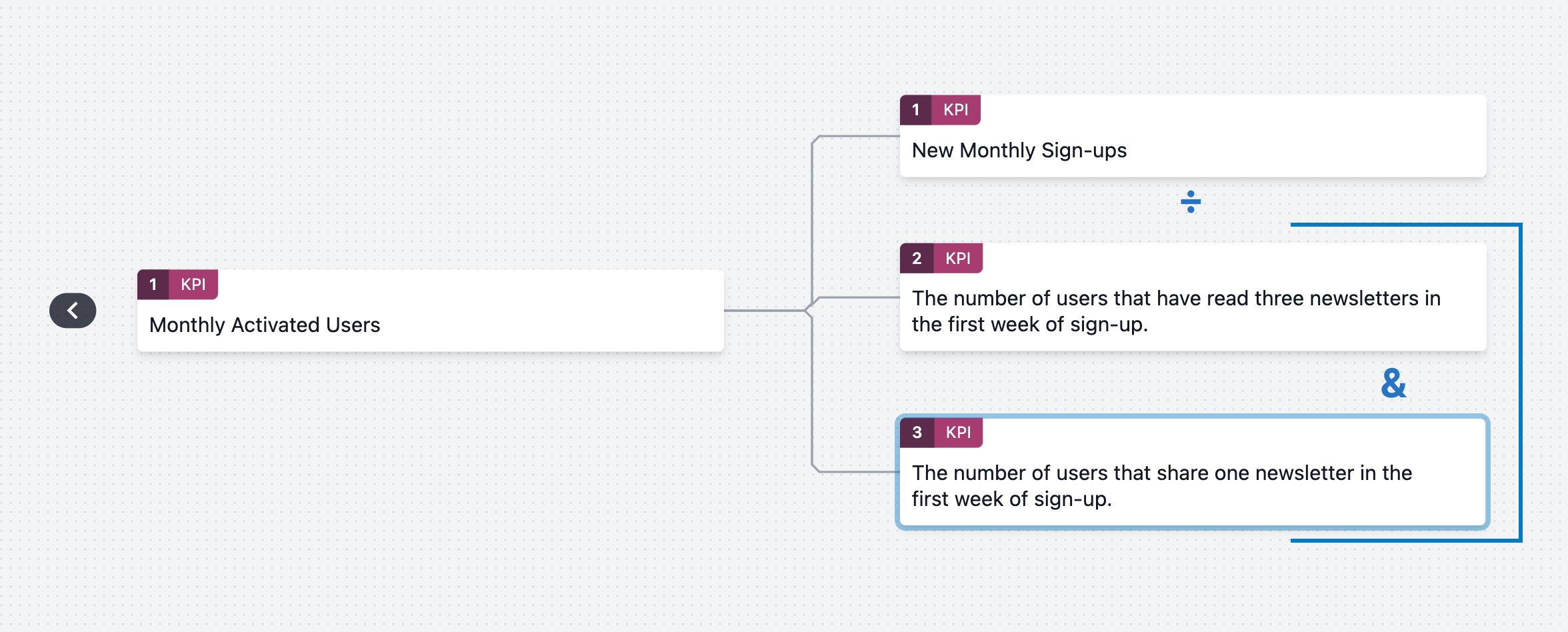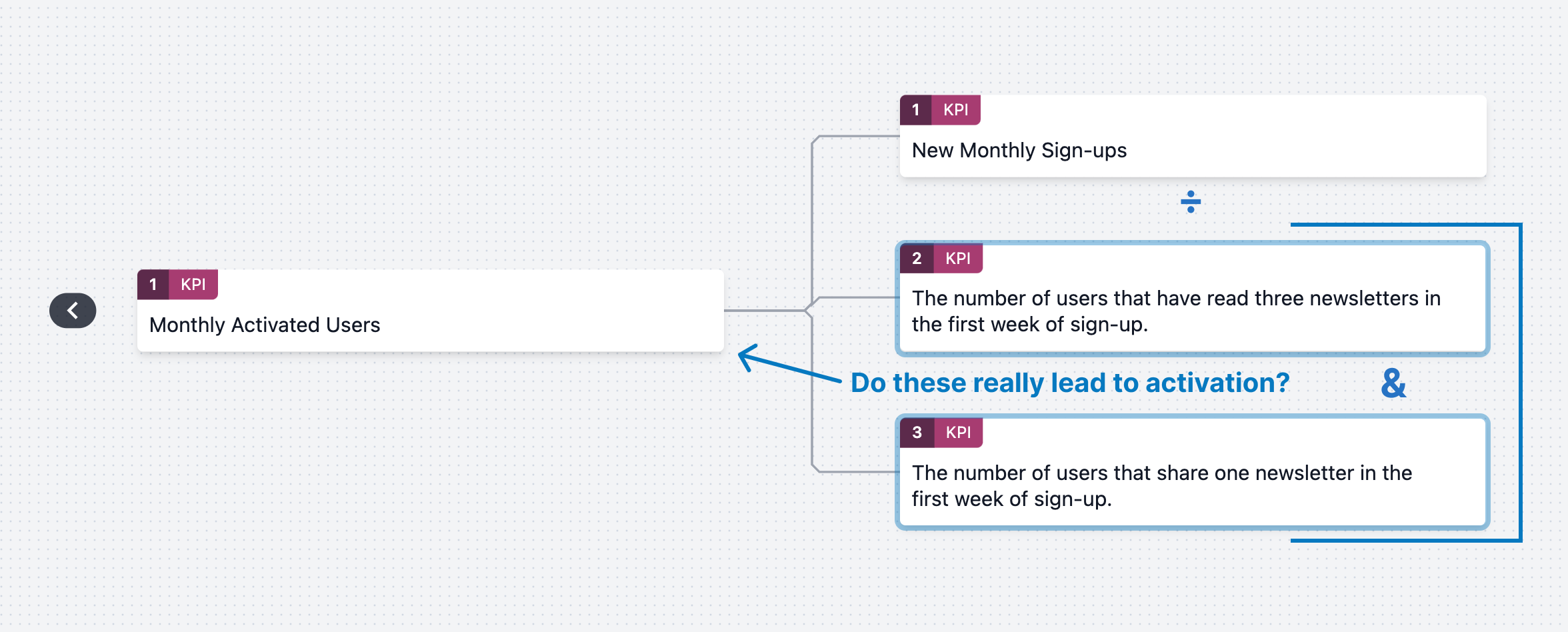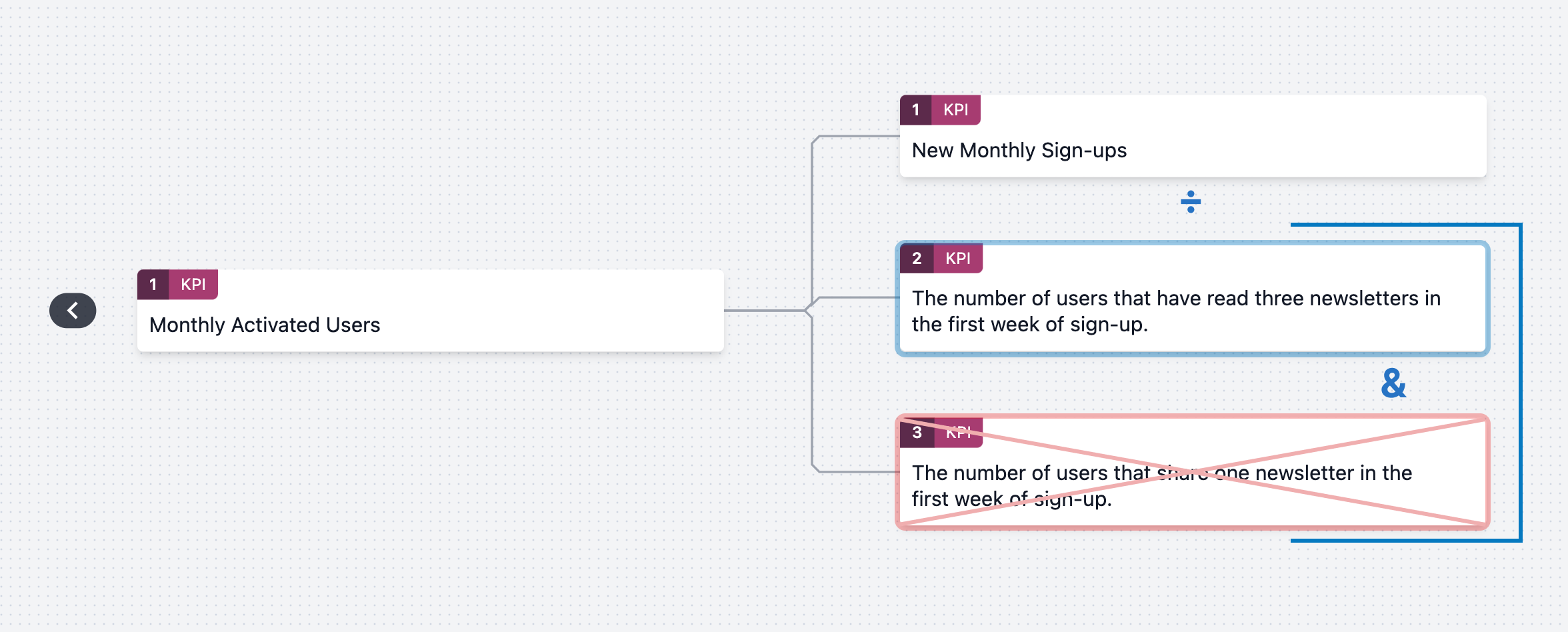As part of building Vistaly, we work closely with several teams and see firsthand the patterns they develop around modeling metrics and collecting discovery data. We regularly test and validate these patterns with users and add support for the ones that add significant value to the way teams work. Today we are releasing an update that adds flexibility to modeling metrics.
A recent release added support for KPIs (and KPI Trees). Today's release builds upon those ideas by allowing teams to attach KPIs to a Workspace or Vision Statement card. This enhancement enables modeling KPI Trees outside of the context of the OKR framework, which in our opinion, is not only preferred but provides two significant benefits:
- Not all teams are forced to use OKRs.
- Teams using OKRs can now apply them to a persistent model, simplifying their strategic use.
Working with a persistent model
Example KPI Tree modeled for a growth organization. (Right-click and 'Open in new tab' to enlarge)

This KPI Tree visually articulates how an example digital newsletter business grows.
The primary ways to influence KPI Trees are to refine their structure and optimize their effectiveness.
Refining a KPI Tree's Structure
Refining structure means identifying new inputs, correlating KPI relationships, and pruning KPIs. These actions improve the model's value and help increase the understanding of how a part of a business or product works.
New Inputs


Correlating KPI relationships

Pruning KPIs

Optimizing a KPI Tree's Effectiveness
Optimization involves improving the values flowing through the model. So, in the example above, if we want to strengthen the "Monthly Activated Users" KPI, we can either improve the "New Monthly Sign-ups" KPI (throughput) or increase the engagement of new users so that they activate.
When optimizing a KPI Tree for effectiveness, OKRs can be an excellent tool for applying strategic focus. And since an already existing model describes how something works (this is what KPI Trees do well), it will require significantly less work to identify areas where strategic improvements can be applied (OKRs).

The tree itself almost tells the story.
- We want to improve Monthly Activated Users because...
- Monthly activated users lead to conversions.
- Increasing the number of new users that read three newsletters in the first week of signing up will increase Monthly Activated Users.
- We will set a goal to increase the percentage of users that hit this activation metric by 60% over the next quarter (Key Result).
This approach can be used not only to improve existing metrics but also to explore new ones. For example, imagine the Key Result was set one level higher at Monthly Activated Users, and your job is to identify new ways to activate users. You can look for patterns in usage and see if there is a stronger correlation between user behavior and activation.
Introducing Discovery
While every team operates differently, we have developed preferences for how we work discovery into these existing models. There are several ways to, here's how we approach it:
- Starting with a KPI Tree...
- Identify an area of improvement. This should be an area that provides significant value if optimized.
- Append an OKR to the selected area of the KPI Tree (similar to the above example). If the KPI is far left in the tree (or closer to the top with vertical orientation), provide additional context or break down the Key Result into smaller leading indicators. If the context does not exist, it may require some initial discovery to figure out how to improve the metric.
- Run the discovery process under the Key Result card – this is the start of your Opportunity Solution Tree.

- Archive the OKR upon completion, and keep the KPI tree – this is your persistent model. Note: Vistaly supports archiving branches of your tree so you can keep the historical data and have a clean working environment.
What's next?
We've got big plans to improve this functionality in Vistaly. So if you're interested in learning more or maybe even getting involved, contact us at support@vistaly.com, and let's find time to connect. Also, sign-up for our newsletter below to stay current on all the latest developments.